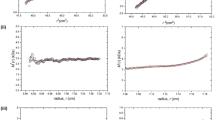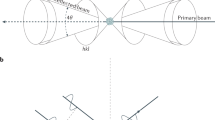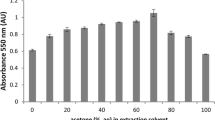Abstract
SINCE the initial reports on chromatographic techniques1, and more especially after the investigations of Consden, Gordon, and Martin2, and Martin and Synge3, numerous modifications of these procedures have made possible remarkable advances in biochemical research. By evaluation of migration characteristics of unidentifiable with identifiable solutes separated by partition chromatography, identification of unknown solutes has been made possible. Similarly, by utilizing preparative ‘filter paper pile’ techniques, such as the chromatopile4,5, the chromatopack6, or the chromatoblock7, constituents of concentrated mixtures can be chemically resolved to yield semi-micro-quantities of pure materials. The present communication concerns the feasibility of utilizing three-dimensional, compressed, paper-pulp blocks for preparative chemical isolation and identification. This technique has three distinct advantages: (1) It makes possible the analysis of an additional parameter, the ‘spreading factor’ (Rs), which can be used to differentiate chemically constituents of the solute mixture together with conventional RF values; (2) it offers a support system capable of handling and separating exceptionally concentrated loads of solute mixtures for subsequent semi-micro-determinations; (3) it provides a closed system which should inhibit oxidations or photochemical alterations of solute zones which sometimes occur in conventional paper chromatography. One disadvantage of the technique is that it requires a solid, compressed fibre block, which, although inexpensive to fabricate, is not yet commercially available. In addition, the procedure necessitates the use of an electric band or jigsaw for serial sectioning of the chromatographic block.
This is a preview of subscription content, access via your institution
Access options
Subscribe to this journal
Receive 51 print issues and online access
$199.00 per year
only $3.90 per issue
Buy this article
- Purchase on Springer Link
- Instant access to full article PDF
Prices may be subject to local taxes which are calculated during checkout
Similar content being viewed by others
References
Schonbein, C. F., Verhandl, naturforsch Ges. Basel, 3, 249 (1861).
Consden, R., Gordon, A. H., and Martin, A. J. P., Biochem. J., 38, 224 (1944).
Martin, A. J. P., and Synge, R. L. M., Biochem. J., 35, 1358 (1941).
Mitchell, H. K., and Haskins, F. A., Science, 110, 278 (1949).
Mitchell, H. K., Gordon, M., and Haskins, F. A., J. Biol. Chem., 180, 1071 (1949).
Porter, W. L., Anal. Chem., 23, 412 (1951).
Arx, E., and Neher, R., Helv. Chim. Acta, 39, 1664 (1956).
Fisher, R. B., Parsons, D. S., and Morrison, G. A., Nature, 161, 764 (1948).
Brimley, R. C., Nature, 163, 215 (1949).
Author information
Authors and Affiliations
Rights and permissions
About this article
Cite this article
PFEIFFER, C., DEBRO, J. ‘Stereo-chromatography’: a New Method for Chemical Identification and Preparative Isolation. Nature 205, 1003–1004 (1965). https://doi.org/10.1038/2051003a0
Published:
Issue Date:
DOI: https://doi.org/10.1038/2051003a0
This article is cited by
-
Ein einfaches Transferbesteck f�r Chromatographie und Elektrophorese
Mikrochimica Acta (1970)
Comments
By submitting a comment you agree to abide by our Terms and Community Guidelines. If you find something abusive or that does not comply with our terms or guidelines please flag it as inappropriate.



